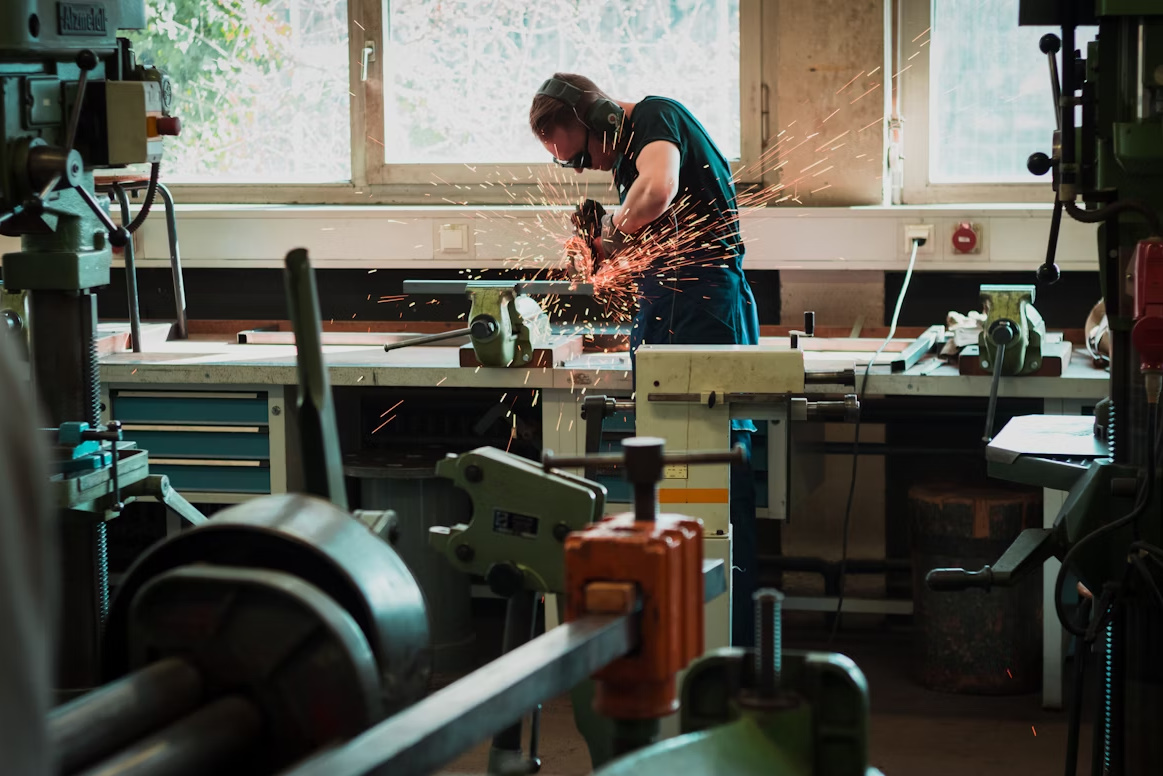If you’re interested in getting into the niche of metalworking, hold on a moment. There are a lot of things you should know before diving in, no matter how good your hands are with DIY.
You may have read about the famous Thermal Dynamics plasma cutter heads and can’t wait to get your hands on them, but here’s the thing. Metalworking is a serious practice, and you want to go about it the right way.
If you get good at this craft, you can even turn it into a great career. Did you know that this is an industry worth over $36.7 billion in revenue for 2024? Starting salaries for a metal worker are close to $42,000, that’s not bad at all if you want to supplement your income.
However, it’s important that you be aware of some important aspects of metalworking. So, without further delay, let’s get right into it.
1. Not All Metals Are Created Equal
Each type of metal has distinct characteristics, including strength, malleability, corrosion resistance, and how it reacts to heat. Choosing the right material for your project can make a significant difference in both the process and the final outcome.
Take steel, for example. Mild steel is ideal for beginners because it’s easy to cut and weld, which makes it perfect for projects like furniture frames or garden tools. On the other hand, stainless steel has much better corrosion resistance. This makes it superior for outdoor installations. Of course, stainless steel does require more advanced tools and techniques because it’s harder to work with.
But, say you find steel too common and want to work with materials like brass. Well, this is another material that can be challenging to work with. Brass is softer than steel, which makes it relatively easy to cut, shape, and engrave. However, its softness also means that it can scratch, dent, or deform if handled roughly.
It’s worth thinking about what kind of metals you want to focus on and using that context to guide your initial investments.
2. Understand the Pros and Cons of Different Cutting and Welding Equipment
The fact of the matter is that each tool has its strengths and limitations. Let’s look at some of the most common cutting equipment you’ll be looking at. You have plasma cutters, oxy-acetylene torches, angle grinders, and water jet cutters. A lot of people get confused when picking between these options, especially between plasma cutters and oxy-acetylene torches.
As Welding Supplies from IOC explains, a plasma cutter is going to give you a much cleaner cut when compared to oxy-acetylene. Both options are going to cut, but if you’re going for aesthetic value, plasma cuts are going to look far neater.
That said, oxy-acetylene cutting and welding is incredibly popular, and its market value is expected to hit $2.1 billion by 2031. It’s also a little more affordable to get your hands on.
Of course, metalworking isn’t just about cutting. There’s also a fair bit of welding and joining involved. You’ve got MIG (metal inert gas), TIG (tungsten inert gas), stick, and flux-cored welders. Often, when people think of welding, they’re thinking of stick welders. However, this type does require considerable skill to make clean welds when compared to MIG.
For most people, MIG welders will be the easiest to pick up. It’s also efficient and fast for welding thin to medium-thickness metals. However, it’s not particularly ideal for outdoor use due to shielding gas sensitivity to wind.
3. Be Well Aware of the Safety Risks Involved
While metalworking is a rewarding and creative hobby, it does come with inherent risks that every enthusiast must take seriously. Every year, more than 560,000 welders are victims of some type of accident, according to the Bureau of Labor Statistics. That’s over a hundred times worse than injury rates for all other workers.
Working with raw metal sheets, sharp edges, or cutting tools like plasma cutters and angle grinders can easily lead to cuts or punctures. Even a small slip of the hand can result in serious injury.
Similarly, heat is a core element of many metalworking processes. Contact with heated metal, sparks, or molten material can cause severe burns. What’s more, it’s not just direct contact that can be dangerous.
Metalworking frequently produces fumes, dust, and fine particles that can be harmful to your respiratory system when inhaled. Activities such as welding or brazing brass release zinc oxide fumes, which can result in “metal fume fever,” a condition characterized by flu-like symptoms.
Frequently Asked Questions
1. Is welding metalworking?
Yes, welding is a fundamental process within metalworking. It involves joining metals by heating them to their melting point and fusing them, sometimes with filler material. Welding is crucial in construction, automotive repair, and artistic metalwork, providing strong, permanent joints essential for structural integrity and creative designs.
2. What tool do you need to cut through metal?
Metal cutting requires tools tailored to the material’s thickness and type. Your options include hacksaws for precision, angle grinders for versatility, plasma cutters for clean cuts in conductive metals, and oxy-acetylene torches for heavy-duty cutting. Advanced tools like waterjet cutters are also an option and offer precision for intricate designs with minimal heat distortion.
3. What are the injuries in metalworking?
Metalworking poses risks like cuts from sharp edges, burns from molten metal or heated surfaces, and eye injuries from flying sparks. It also does have some dangers in terms of respiratory harm from toxic fumes or dust. This is why proper training, safety protocols, and personal protective equipment are essential to mitigate dangers.
To summarize, metalworking can be a hobby that combines creativity and technical skills. It allows you to transform raw materials into either functional pieces or decorative works of art. However, it’s not exactly a simple hobby, so do your research before you start.

